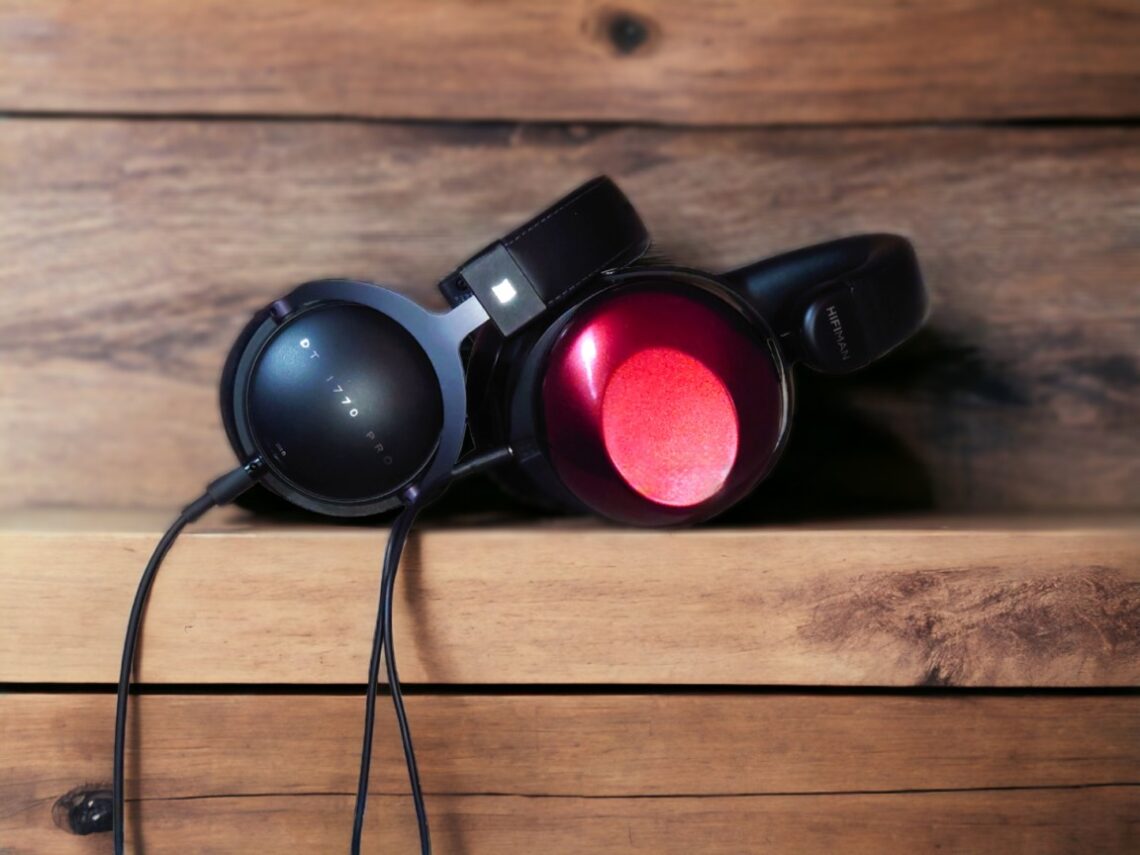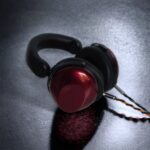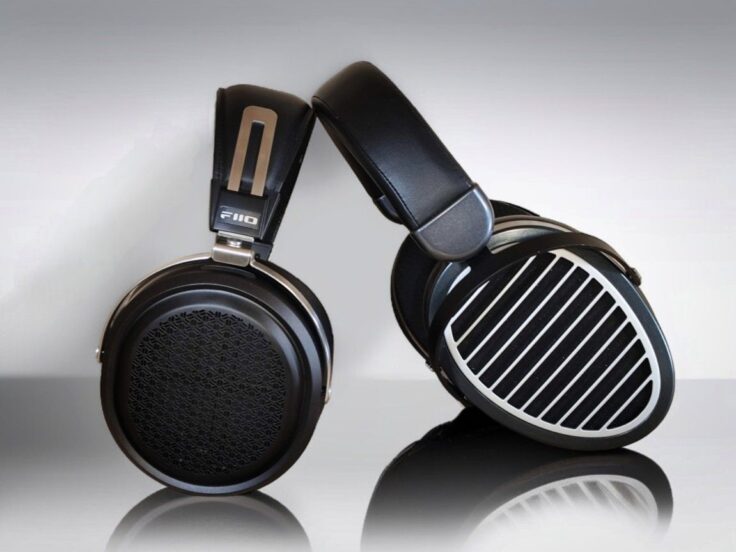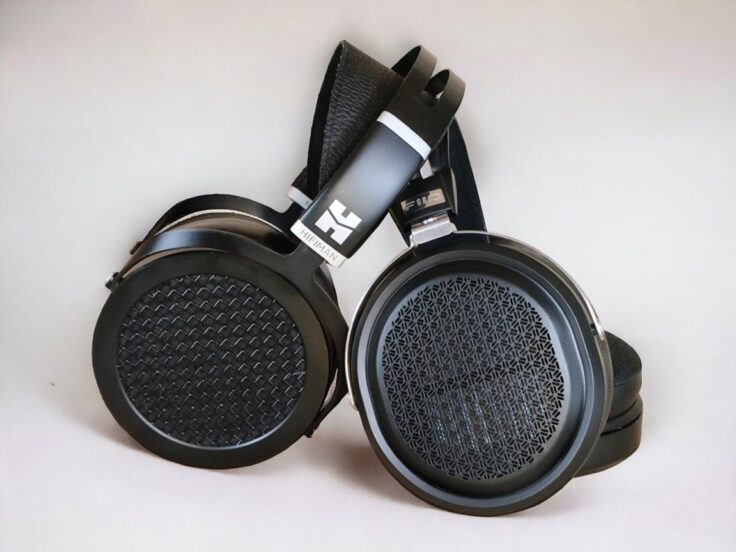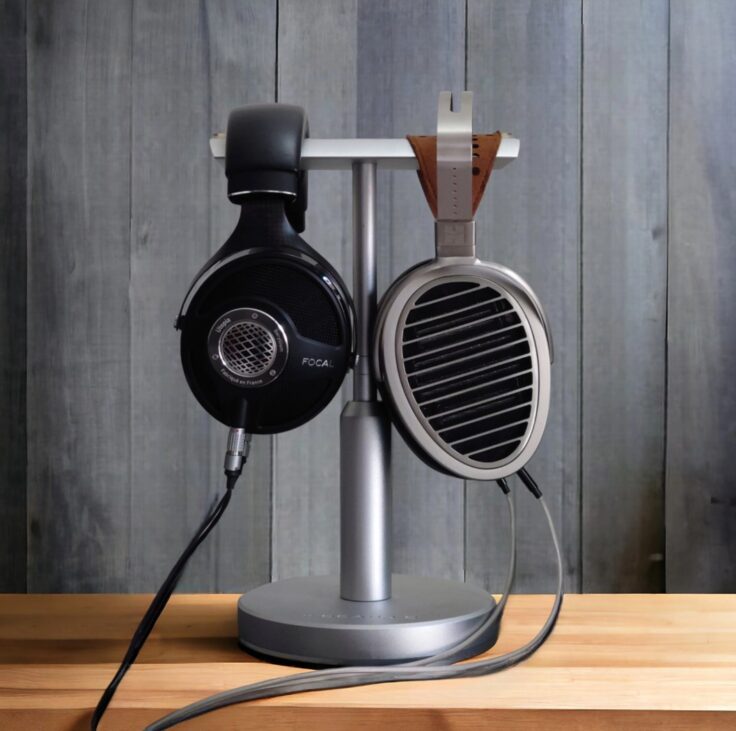These headphones are both full-sized over-ear closed-back headphones. However, they are very different sounding and aimed at different users.
The HE-R9’s main strength is its hefty bass performance. It has good mid-range presence but less upper midrange energy than many headphones. Add this to its polite treble, and we get a very specific tuning. It is, to put it bluntly, a dark and bassy-sounding headphone. In contrast, the DT1770PRO provides a balanced and quite neutral listening experience. Anything else would of course be shocking because it is a headphone aimed at, and used by, professionals.
Subjectively speaking, my preference order of these headphones varies across different music tracks. The HE-R9 shines in delivering a warm, enveloping atmosphere for many, but not all, tracks, whereas the DT1770PRO excels in clarity, neutrality and precision. It’s more revealing across the spectrum and a much better all-around headphone.
In terms of design and build, they also differ. For home use, I find the HE-R9 is more lightweight and comfortable. However, the DT1770PRO doesn’t lag much behind in comfort and the construction is very robust and made for professionals. The HE-R9 is also much larger.
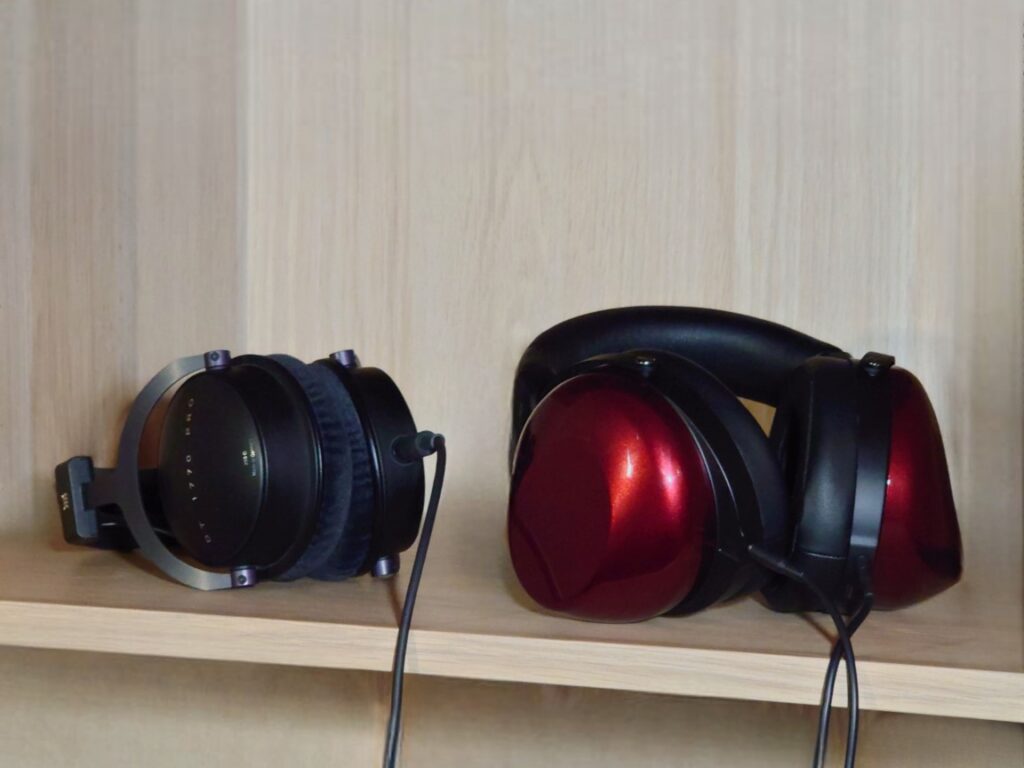
Both use a dynamic driver. The HE-R9 is generally an easier load with a 60-ohm impedance and 100 dB sensitivity. The DT1770PRO is a high-impedance headphone with 250 Ohms but a relatively friendly 102 dB sensitivity. This will affect their performance with different audio sources. On most amps, the DT1770PRO will need more juice.
If you are a professional or doing mastering and mixing you should not even consider the HE-R9. It is a coloured headphone. However, it can definitely be enjoyable and whether or not you like it will depend on your personal preferences and the music you listen to. I will do a track by track comparison below.
SPECIFICATIONS BEYERDYNAMIC DT1770PRO
- Style: Closed-Back
- Cable: 3-pin mini XLR to 6.35mm TRS – 3m long
- Impedance: 250 ohm
- Sensitivity: 102 db
- Frequency Response: 5 – 40,000 Hz
- Power Handling: 200 mw
- Weight: 388g
- Made in Germany
SPECIFICATIONS HIFIMAN HE-R9
- Style: Closed-Back
- Cable connection: Single Entry Balanced 3.5mm TRRS or Single Ended Dual 3.5mm TRS
- Transducer Type: 50 mm “Topology Diaphragm” Dynamic Driver
- Frequency Response: 15 Hz to 35 KHz
- Sensitivity: 100 dB/mW
- Weight: 328 grams
- Impedance: 60 ohms (Impedance was previously 32 Ohms but now it is 60 Ohms)
- Dual entry single-ended 3.5mm headphone cable with 1/8″ Jack and 6.35mm adapter 1.5 m long included.
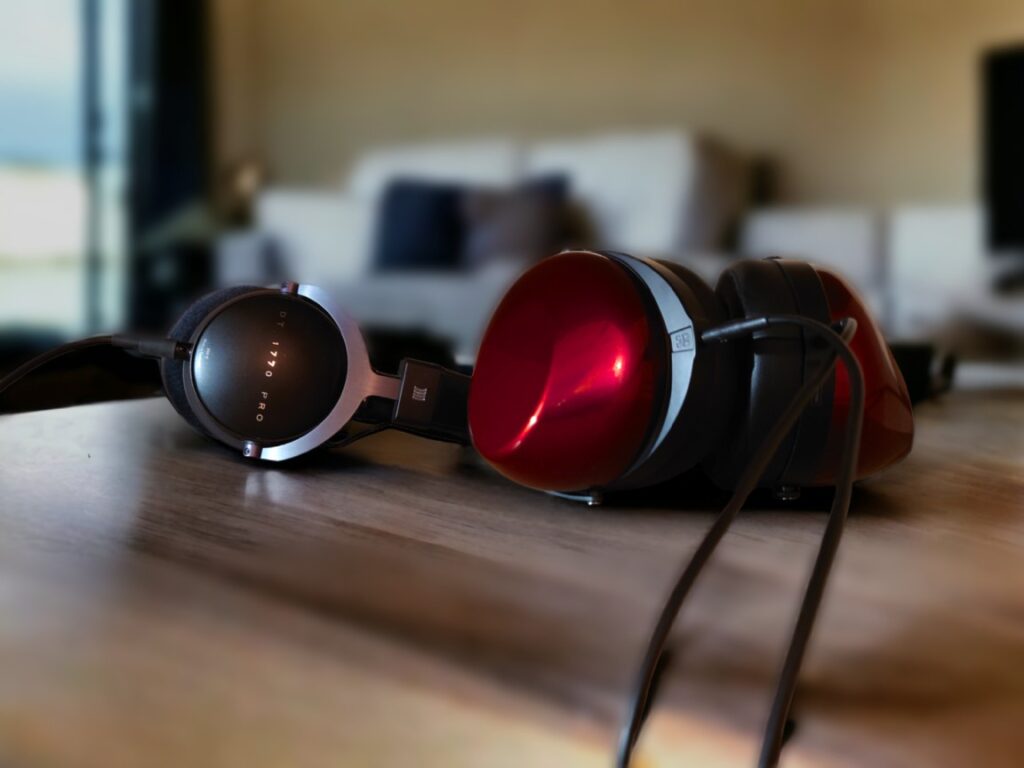
LISTENING COMPARISONS
Comparisons were done using the powerful Auralic Taurus desktop amplifier. RME ADI-2 DAC FS was the source.
Bijou Voyou Caillou by Florian Pellissier
The bass on the HE-R9 is massive. The vocals feel a bit recessed, lacking upper midrange presence. Honestly, it feels a bit boxed-in and this is not the best performance from this headphone.
The DT1770PRO is much more balanced. There’s enough bass energy, more upper mids and treble. It’s just a lot more neutral listening experience. That should not really surprise anyone because these headphones are made for professionals.
Bordeaux State of Mind by Bendik Hofseth et.al.
I find this track to be a very pleasurable listen with the Hifiman HE-R9. It’s full-bodied and enveloping. Warm and pleasant with good detail of the kind that doesn’t protrude.
The DT1770PRO has a lot less bass and is sharper and brighter. The details are easier to spot. It’s clearer and crisper.
Bored by Deftones
The DT1770PRO sounds good, but I’d like a bit more bass. Not that it’s the headphone’s fault, but the mix is a bit bright. Swapping to the HE-R9 is almost shockingly different. They are so far apart it is ridiculous. Before my brain adjusts, the HE-R9 sounds muffled, boxy and boomy. However, after giving it some time I can begin to enjoy it. The bass is intense, and the track sounds a lot more massive with the HE-R9.
Brahms’ Symphony No. 3 by Gewandhausorchester
Starting with the HE-R9, I honestly find it quite muddled and boxy. There are seemingly some resonance issues with the cups that don’t suit this music. Swapping headphones I must give myself some time to adjust. The DT1770PRO is a lot more balanced across the spectrum with no real resonance issues.
Cadenza by Marcin Wasilewski Trio
Starting with the HE-R9, this sounds quite good. The bass isn’t overwhelming, and the trumpet and piano have nice timbres. The presentation is spacious. The percussion is delicate.
The DT1770PRO sounds different, less dark, and crisper. It’s also a good listen. The treble is much more upfront, but it’s not overly bright. I like both headphones.
Brothers by Adam Baldych and Helge Lien Trio
Starting With the DT1770PRO this sounds very good, really well balanced. The bass has punch and body, and the violin strings have a crisp and textured tone. With the HE-R9 the bass is boomy and things sound a lot darker – in a not so flattering way.
Caravanserai by Forsonics
This is really nice with the HE-R9. Dark and warm sounding and enveloping. The drums resonate a bit in the cups but in a way that feels like real drums. The trumpet has a delicious timbre.
The DT1770PRO isn’t as different here as on some of the other tracks. The bass is not as big but is full-bodied and very present. The trumpets have a sharper tone, percussion is snappier and crisper. The DT1770PRO generally sounds brighter – or rather less dark.
Limit to Your Love by James Blake
Starting with the DT1770PRO, this sounds good. The vocals are crisp and bright, the bass is well-balanced, and the soundstage is open. Swapping to the HE-R9, I really like the vocal’s timbre. The bass, however, is ridiculously strong. Even after -6 dB EQ, it’s a bit much.
Lounge Fly by Stone Temple Pilots
This challenging track sounds quite muddy and chaotic with the HE-R9. There are some resonance issues that aren’t really enjoyable. The bass isn’t especially strong, I guess it depends on the frequencies. The DT1770PRO sounds a lot more organized. Neither dark nor especially muffled, however, there’s some sibilance. As I said, this is a challenging track. Neither sounds very good.
Lovers on The Sun by David Guetta
This track almost always sounds bright and unpleasant. Also with the DT1770PRO. The HE-R9, on the other hand, makes this track quite enjoyable. The bass isn’t overwhelming, the brightness is toned down.
Filth Pig by Ministry
This sounds really good with the HE-R9. The bass is better if I EQ it down, but the presentation is full-bodied and enveloping. The DT1770PRO is also good, but crisper and brighter. It’s more true to the recording, no doubt, but less enjoyable.
Lucid Dreaming by Orions Belte
Electric guitar genre mix – jazz/western slide guitar. Sounds great with the HE-R9, except the bass is a bit much. When EQ-ed down 6 dB it is still strong but enjoyable.
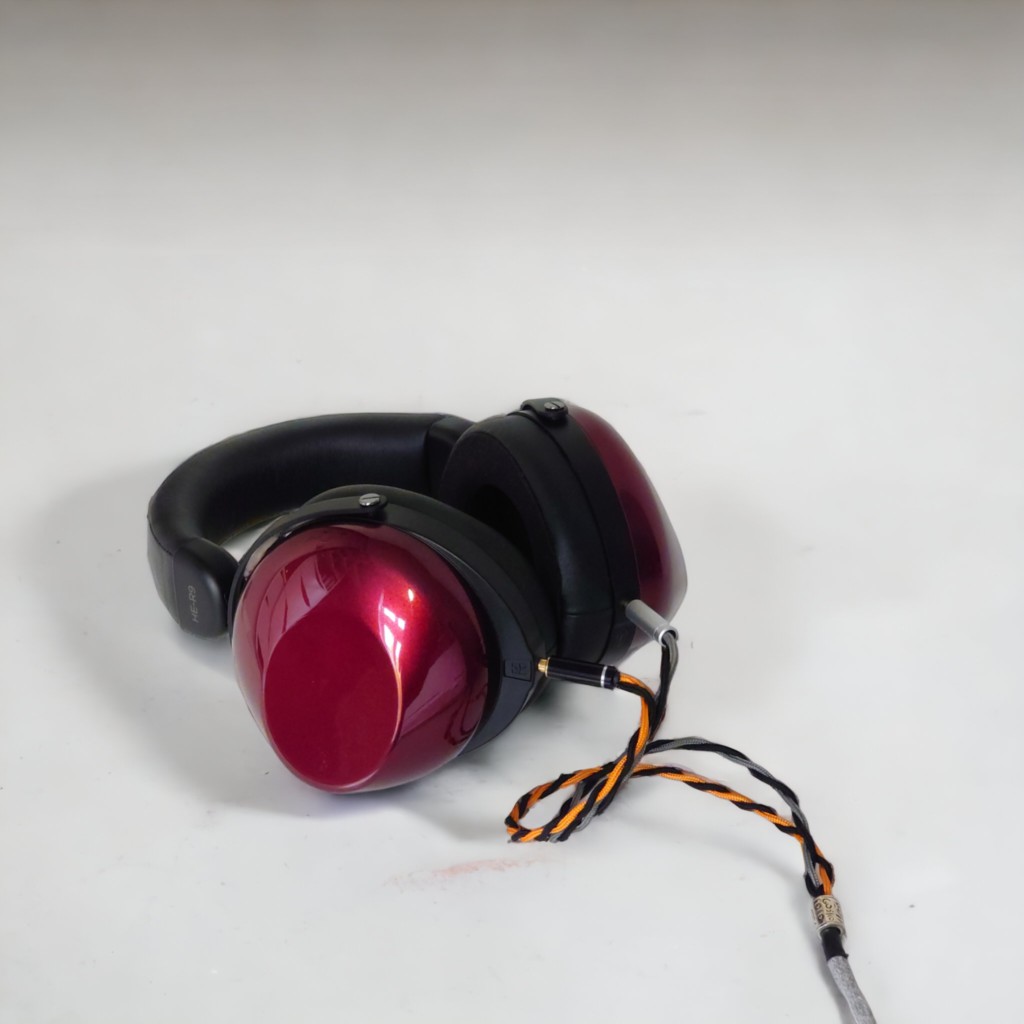
WRAPPING IT UP
- Treble: The HE-R9 is a dark headphone. I like the treble quite a lot. It has detail and presents fine nuances but it is always polite. The DT1770PRO is crisper, brighter and less forgiving with more energy and weight.
- Mid-range: I think the mid-range is my favourite part of the HE-R9. It might not be totally neutral but it is very velvety and inviting. The DT1770PRO is more revealing with more energy in the upper mid-range.
- Bass: The HE-R9 has a lot more bass. The DT1770PRO isn’t bass-shy, but the HE-R9 is a monster. It responds well to EQ (down)
- Soundstage and sound signature: The HE-R9 is extremely bass-heavy, with a relatively neutral and smooth mid-range and a polite treble. The DT1770PRO is made for professional use and is much more neutral. It has crisp and clear highs, brighter midrange and less dominating but still very present bass. With regards to the soundstage, I think they both do quite well for a closed-back headphone and they are similarly wide and deep. The DT1770PRO sounds more open and lighter, though.
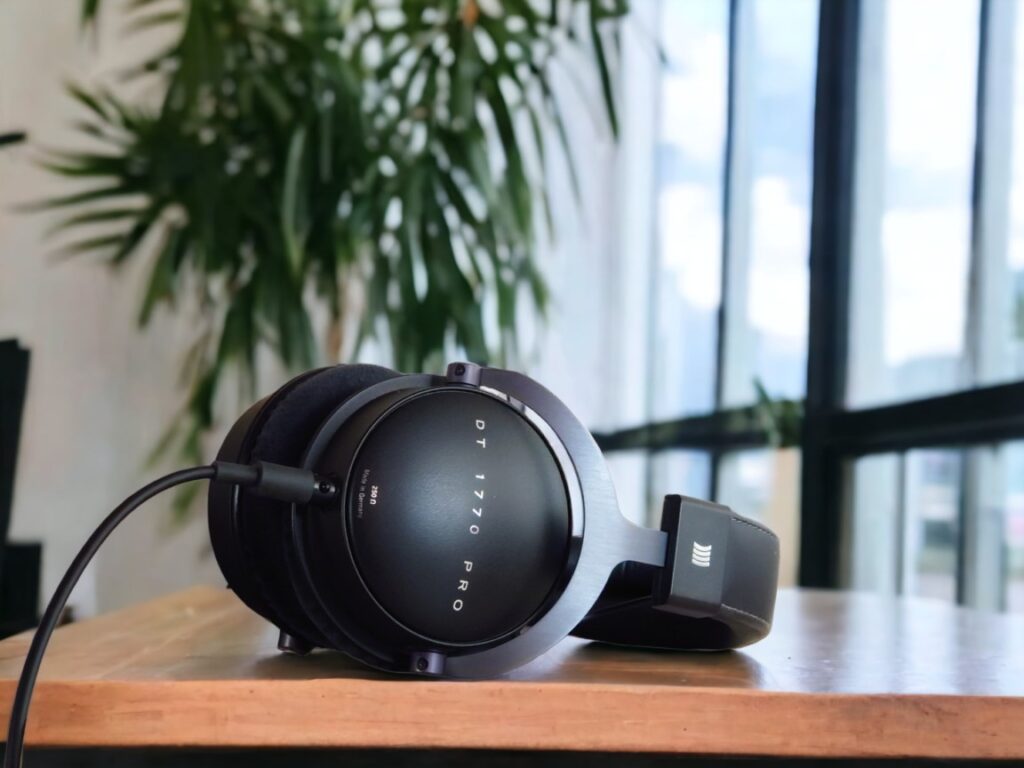
CONCLUSION
If you are looking for a neutral-sounding headphone you should not even be considering the HE-R9. It is all about heavy bass, a smooth mid-range and polite top end. Sometimes it is simply gorgeous and sometimes it is almost unlistenable without EQ-ing down the bass. I think Hifiman could have done a better job of controlling the resonances within the cups. If you want to experiment with modding they might be an ideal choice. It is also a very fun headphone for some music and can absolutely find its place as a supplementary headphone. Using EQ will definitely make it more flexible and more enjoyable with a wider range of music.
For neutral listening and professional work, however, it is not what you are after. The DT1770PRO, though, might be it.
Link to the my Hifiman HE-R9 review here
Products mentioned in this article: Hifiman HE-R9 and Beyerdynamic DT1770PRO (links to Amazon)
Any purchase you make on Amazon or Linsoul with any of our affiliate links will give us a small provision at no cost to you.
We only get a provision for items that are not returned, so there’s no incentive for us to recommend something that’s not good.
Linsoul : Headphones, Earbuds, Wireless Earbuds, Desktop DAC/AMP, Portable DAC/AMP, Digital Audio Players,
Amazon: Headphones, IEMs, Headphone Amplifiers, Home Audio or Anything else.
.
If you enjoyed this article or other content on The Headphoneer, you might consider leaving a small donation to keep this website up and running. No donation is too small. Thanks for supporting us!
If you like our work please follow us on Instagram, Facebook and Twitter , it will help us grow. Sharing is caring 🙂


